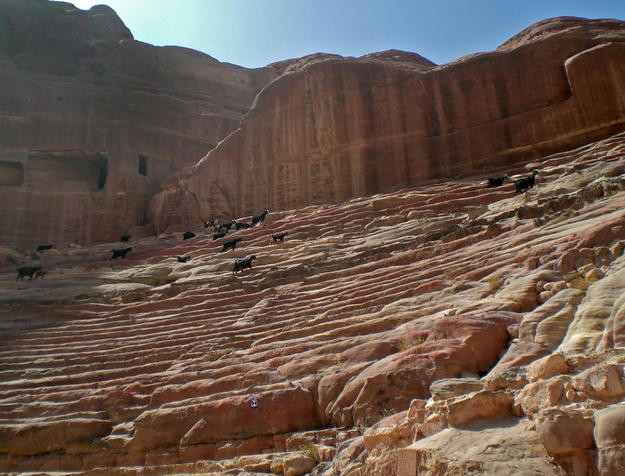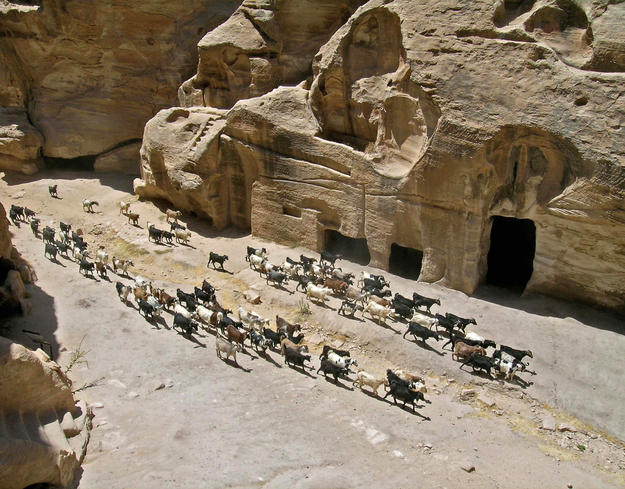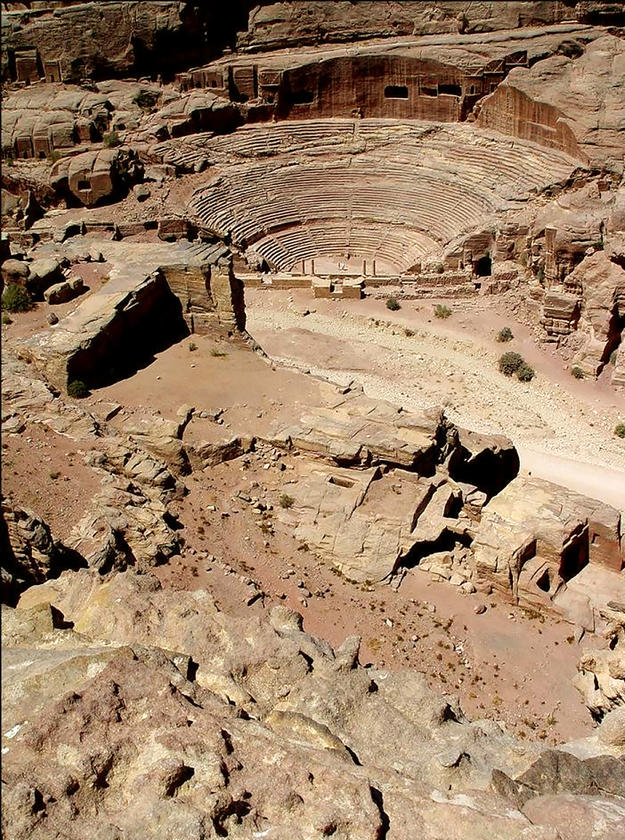The magnificent ruins of ancient Petra occupy a high plateau that rises out of Wadi Mousa, the Valley of Moses, in southwestern Jordan. In 300 B.C., Nabataean invaders captured the city of Petra, which had been the capital of the Edomite Kingdom, securing their hold on the region. From Petra, the Nabataeans controlled East-West trade routes between the Mediterranean Sea and Arabia, Syria, and Egypt. Their taxes on passing caravans generated immense wealth for Petra, which was reflected in monumental sculpture and architecture throughout the city. Many of Petra’s most spectacular structures were carved into the red sandstone surroundings so that their facades, which can rise to 130 feet (40 meters) in height, appear in dramatic relief against the cliff-faces. Petra also possessed a system of channels, dams, and cisterns that enabled its desert existence and tempered the harmful effects of flash flooding. As the centuries progressed, waves of Hellenistic, Roman, and Byzantine influence washed over the city and can be traced in its architecture. Petra was finally abandoned in the sixth century because of changes in trade routes that caused its economy to dry out.
A Long-term Vision
Petra is located in a seismic zone, making it vulnerable to earthquakes and flash floods that consistently damage its remaining architectural features. Beginning in the late twentieth century, the ruins were also threatened by ever-increasing numbers of tourists who roamed over the ancient stones without protective measures in place alerting visitors to the fragile nature of the site. Petra was included on the Watch in 1996, 1998, 2000, and 2002 in an effort to send a strong and sustained message and draw attention to the need to improve tourism management. WMF partnered with the Petra National Trust and the Jordanian Ministry of Tourism and Antiquities to identify priorities and develop a long-term strategy for the site. WMF provided assistance for a number of initiatives over a ten-year period: a site survey, new signage, a climate change study, and institutional strengthening and capacity building. WMF also worked on specific architectural projects, including conservation of the massive Great Temple, Byzantine church, and Qasr al-Bint, as well as the reconstruction of the ancient water channels to prevent future flooding.
1996, 1998, 2000, 2002, and 2016 World Monuments Watch
Addressing the long-term challenges at Petra has been a slow but steady process. Community engagement and integration of community members into preservation planning represents a new opportunity. Currently, the Petra National Trust helps Petra’s youth learn about and take pride in this world-famous ancient city. Through various initiatives, including youth workshops, teacher training, and the Petra Junior Ranger program, heritage managers are aiming to instill a preservation ethic among the local community and empower young people by giving them a stake in the future of the site. The 2016 World Monuments Watch encourages the further development of educational opportunities that will encourage local youth to value their common heritage and support its protection.
Watch Day
Petra National Trust hosted a Watch Day in December 2016, consisting of a workshop for young members of villages in the Petra region. The workshop focused on creating awareness within the local communities of the value of their unique Intangible Cultural Heritage through folkloric songs and performances.



